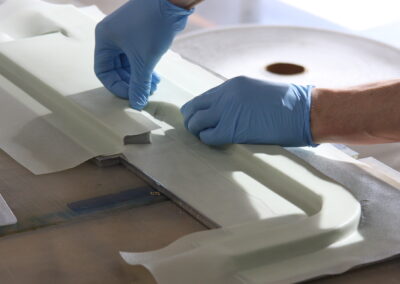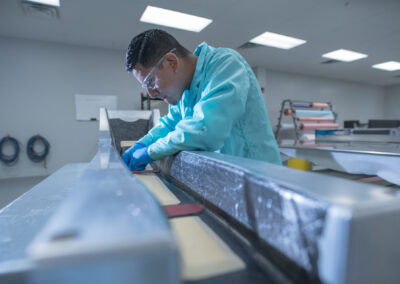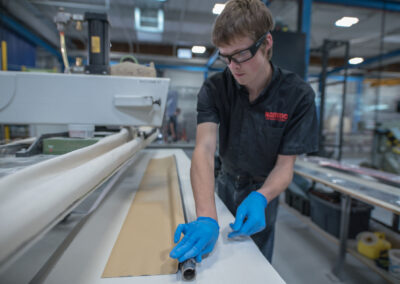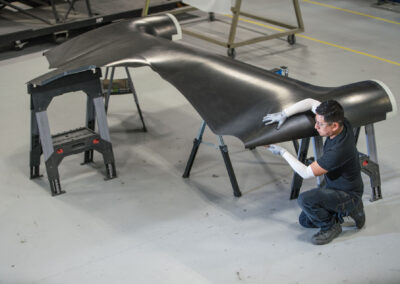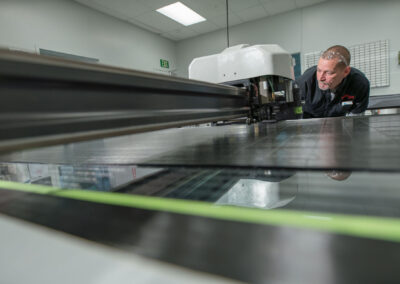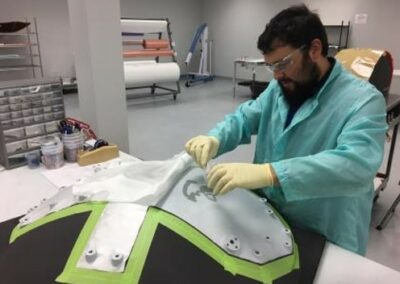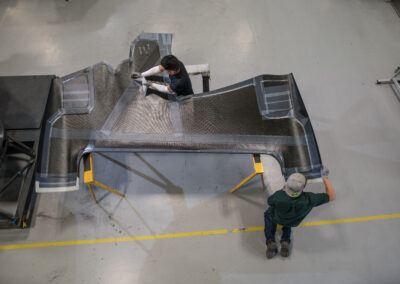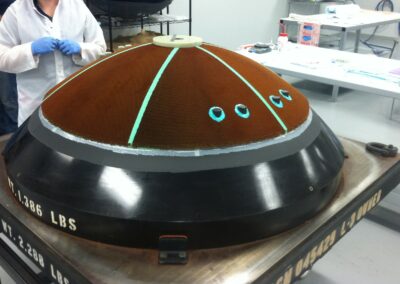Layup and Molding
The hand layup process is used to fabricate all types of part complexities. Materials are cut to the predetermined size and shape using a cutting table or templates. These plies are applied by hand onto the tool surface, ensuring that the material achieves the proper coverage without wrinkles or bridging in corners. Depending on the materials and requirements, vacuum debulks are performed, either heated or at room temperature, to consolidate the plies. Typical composite materials take the form of dry or prepreg fabrics and tapes. Additional materials such as foam or honeycomb cores, metallic or non-metallic components, and electrical wiring can also be installed into the layup. This layup is then vacuum bagged and prepared for cure in a variety of different processes.
Key Benefits of Hand Layup
- Complexity: The hand layup process excels at producing components with the most complex of shapes that automated processes cannot achieve easily.
- Customization: Hand layup offers unparalleled flexibility, enabling the creation of customized components tailored to the unique requirements of each project.
- Limitless: The size of the components that can be built using this technique range from small, handheld parts to large vehicles, wind turbine blades, and boats.
Nammo Composite Solutions has extensive experience fabricating components via hand layup. The team of engineers uses specialized software to develop flat patterns for each ply based on the structural requirements. The positioning of these plies during layup may be controlled with the tool itself, templates, or by using laser ply projectors. Hand layup of complex parts necessitates experienced craftsman and the company’s technicians undergo a rigorous internal training program before being certified for each product build. Components for the Aerospace and Defense industries typically require a climate-controlled environment during layup to ensure that repeatable quality is achieved, per Nadcap accreditation standards. Nammo maintains a Class 100,000 clean room where temperature, humidity, and particle count are monitored and controlled.

